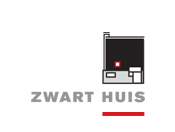Colin Waeghe
Vers la chute, il y a une marche
10 Mar 2024 - 27 Apr 2024
Opening: Sunday 10 March 14h-18h
Vers la chute, il y a une marche is the title of the latest exhibition by Colin Waeghe. “Chute” in French or “Fall” in English, carries various meanings. “Chute” can signify both a fall and a waterfall. Towards the fall, there is a step that must be taken. This sounds somewhat contradictory; a fall and simultaneously a step forward, implying progress or new development.
Water has long been attributed with liberating and purifying qualities. Universally, water is associated with purification and change. The baptism ritual is perhaps the most well-known example in our regions; immersing oneself (or being immersed) in water as a rite of passage, a transition. This association is not strange. After all, water is the absolute condition for life and fertility.
A waterfall is sometimes also a passage. In this case, the waterfall represents a return to the source or origin, to take a step forward. Often, from the waterfall springs a stream, a new beginning. Figuratively, a waterfall activates a flow of free associations, a stream of consciousness. Like a (verbal) waterfall, there is a striving for free, associative, and intuitive painting.
However, to reach this ‘waterfall’, a step must be taken. This step is the abandonment of the image to return to the painterly aspect where the enjoyment of painting and color can once again take precedence. The subject also entails a return to nature, to the source of all life. The waterfall reflects the grandeur of this nature and alludes to its untouched purity.
This new series of works is nothing less than an ode to life. This celebration of life finds expression in colors and the pure pleasure of working with the material of paint. Although starting from a (photographic) image, the paintings reveal a desire to break free from the image. With the action of painting and the intuitive color palette, the narrative image is gradually released. The compulsion dissolves.
Waterfalls are a gratifying subject to work with. Visually, they leave much room for an expressive way of working. Although water is ‘colorless’, under certain circumstances, a waterfall can generate a rainbow - a multitude of colors. In various paintings, the image is formed by color itself. Multicolored areas are formed by strokes of color. The direct link to the subject is not so much the image on which the painting is based, but rather the feeling experienced from this image.
Yet the mind seeks figuration, a recognizable form, an interpretation. Perception is continuously subject to change and interchange. A cartography seems to be emerging. The dragon, a symbol of fertility in Asia, merges with the waterfall, becoming a waterfall or vice versa. However, the images resist being captured in a specific logical form. On the contrary, the more one searches for this recognizable form, the more it changes, disappears. The painted image does not have to be abstract or figurative but can be neither or both. Colin Waeghe indicates that the images are the freedom or uniqueness of simply painted images.
Georges Petitjean
